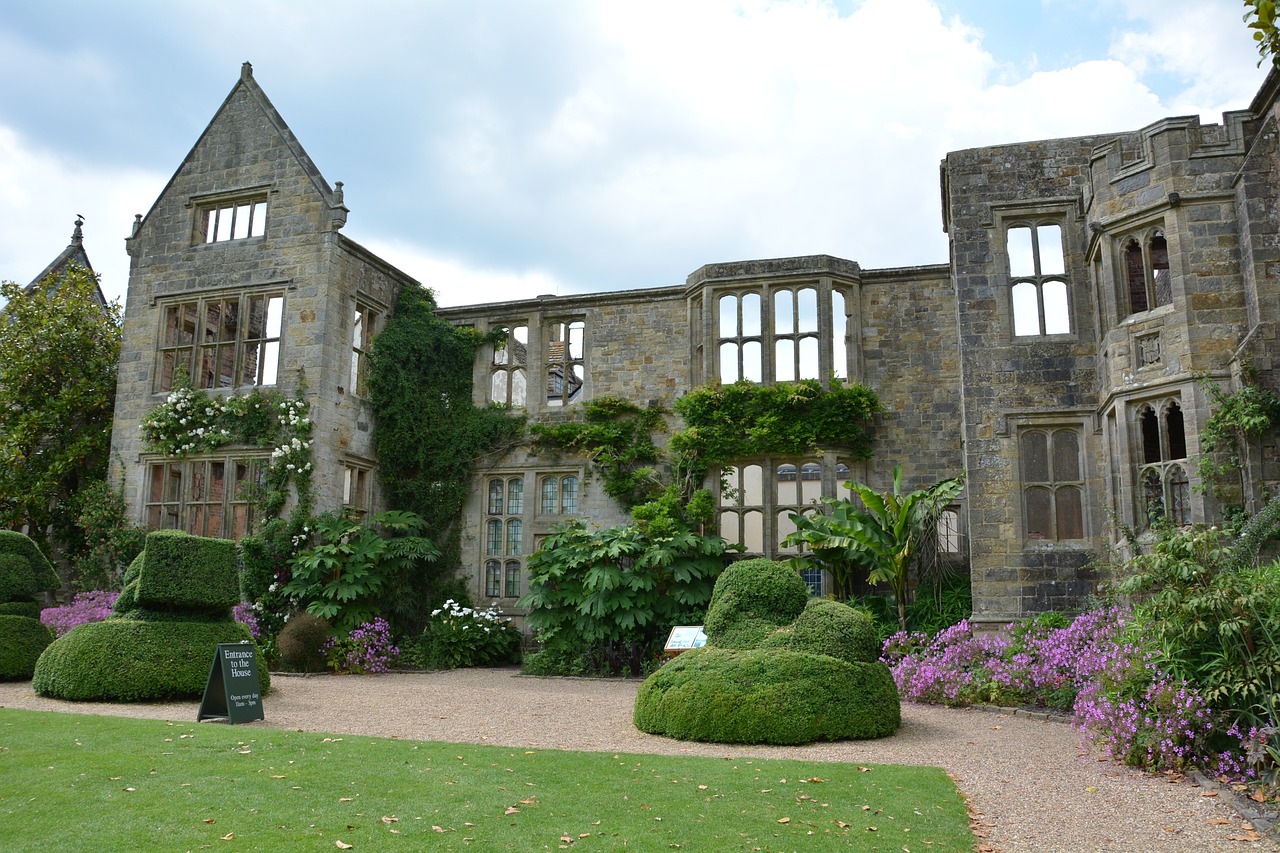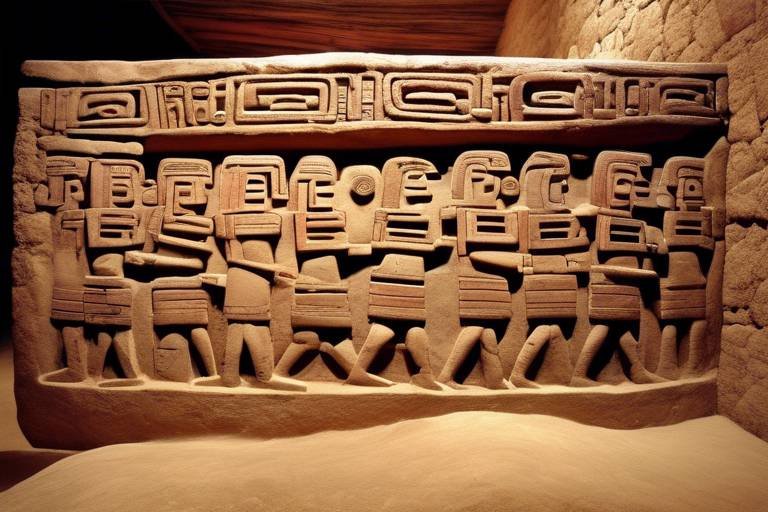The Enigma of the Great Zimbabwe Civilization
The Great Zimbabwe Civilization stands as a captivating enigma in the annals of history, shrouded in mystery and grandeur. This ancient civilization, nestled in the heart of present-day Zimbabwe, continues to intrigue scholars and visitors alike with its awe-inspiring architectural feats and cultural richness.
As we delve into the history of Great Zimbabwe, we uncover a saga of remarkable achievements and eventual decline. The origins of this civilization date back to the 11th century, flourishing as a hub of trade and culture in Southern Africa. The rise of Great Zimbabwe saw the construction of impressive stone structures, symbolizing the power and sophistication of its inhabitants.
Archaeological discoveries have unveiled a tapestry of insights into the lifestyle and societal dynamics of the Great Zimbabwe people. Excavations have revealed intricate trade networks that linked distant regions, showcasing the economic prowess of this ancient civilization. The iconic Great Enclosure, a monumental stone structure within the ruins, stands as a testament to the advanced engineering skills and artistic ingenuity of its builders.
Trade and economy played a pivotal role in sustaining the prosperity of Great Zimbabwe. The civilization thrived on the exchange of goods along well-established trade routes, fostering a bustling economy fueled by gold, ivory, and other commodities. The legacy of this economic vibrancy echoes through the remnants of ancient marketplaces and trading centers.
However, the decline of Great Zimbabwe remains a subject of debate and speculation. Historians and archaeologists have proposed various theories, ranging from environmental factors to political instability. Environmental changes, such as prolonged droughts and resource depletion, may have exerted pressure on the once-thriving civilization, leading to its gradual unraveling.
Political dynamics and internal conflicts also likely played a role in the downfall of Great Zimbabwe. Power struggles and societal unrest could have eroded the stability that once characterized this mighty civilization, ultimately contributing to its decline. The echoes of these tumultuous times reverberate through the remnants of abandoned structures and forgotten narratives.
Despite its eventual demise, the legacy of Great Zimbabwe endures as a cornerstone of Zimbabwean identity and heritage. Efforts to preserve and protect the ruins have fueled tourism and conservation initiatives, ensuring that this UNESCO World Heritage Site remains a beacon of cultural significance for generations to come.
In conclusion, the enigma of the Great Zimbabwe Civilization continues to captivate the imagination, inviting us to unravel its mysteries and ponder the intricate tapestry of history it weaves. From the towering stone walls of the Great Enclosure to the whispers of ancient trade routes, the legacy of this ancient civilization beckons us to explore, learn, and preserve the rich heritage it embodies.

History of Great Zimbabwe
Exploring the mysteries and wonders of the Great Zimbabwe civilization takes us on a journey through time, unraveling the secrets of a once-thriving ancient society. From the majestic architectural marvels to the intricate societal structures, the history of Great Zimbabwe is a tapestry of intrigue and fascination.
The origins of the Great Zimbabwe civilization date back to the 11th century, when it emerged as a powerful kingdom in southern Africa. The rise of this civilization was marked by impressive achievements in architecture, trade, and governance, positioning it as a dominant force in the region.
At the heart of Great Zimbabwe lies the iconic stone ruins that bear witness to the ingenuity and skill of its builders. These structures, including the renowned Great Enclosure, stand as testaments to the advanced engineering capabilities of the civilization.
As the kingdom flourished, it established extensive trade networks that connected it to distant lands, fostering a thriving economy based on commerce and exchange. The wealth and prosperity of Great Zimbabwe attracted traders from far and wide, enriching its cultural tapestry.
However, the golden age of Great Zimbabwe eventually gave way to a period of decline, shrouded in mystery and speculation. Historians and archaeologists have put forth various theories to explain the civilization's downfall, ranging from environmental factors to political instability.
Despite its eventual decline, the legacy of Great Zimbabwe endures to this day, shaping the cultural identity of modern Zimbabwe. Efforts to preserve and protect the ancient ruins reflect the significance of this UNESCO World Heritage Site in safeguarding the heritage of the region.
- What is the significance of the Great Enclosure? The Great Enclosure is a monumental stone structure within the Great Zimbabwe ruins, symbolizing the advanced craftsmanship and engineering skills of the civilization.
- How did trade contribute to the prosperity of Great Zimbabwe? Trade routes connected Great Zimbabwe to distant regions, facilitating the exchange of goods and fostering economic growth within the civilization.
- What factors led to the decline of Great Zimbabwe? The decline of Great Zimbabwe has been attributed to environmental changes, political unrest, and economic challenges that plagued the once-thriving kingdom.
- Why is Great Zimbabwe considered a UNESCO World Heritage Site? Great Zimbabwe is recognized for its cultural significance and architectural achievements, earning it a place on the prestigious list of UNESCO World Heritage Sites.

Archaeological Discoveries
Archaeological discoveries surrounding the Great Zimbabwe civilization have provided invaluable insights into the daily lives, societal structure, and cultural practices of this enigmatic ancient society. Through meticulous excavations and careful analysis, researchers have unearthed a treasure trove of artifacts and evidence that illuminate the rich history of Great Zimbabwe.
One of the most remarkable discoveries within the Great Zimbabwe ruins is the Great Enclosure, a massive stone structure that stands as a testament to the advanced engineering skills and architectural prowess of the civilization. The intricate stonework and strategic design of the Great Enclosure have captivated archaeologists and visitors alike, offering a glimpse into the grandeur and sophistication of the past.
Furthermore, excavations at various sites within the Great Zimbabwe complex have revealed a complex network of trade routes that connected the civilization to distant regions. The presence of exotic artifacts and goods indicates a thriving economy based on trade and commerce, highlighting the interconnectedness of ancient societies and the importance of economic activities in sustaining civilizations.
Moreover, the discovery of pottery, tools, and other everyday items provides valuable clues about the lifestyle and technological advancements of the Great Zimbabwe people. By studying these artifacts, archaeologists have been able to piece together a more comprehensive understanding of the social structure, religious beliefs, and artistic expressions of the civilization.
Overall, the archaeological discoveries surrounding the Great Zimbabwe civilization continue to unravel mysteries and unveil hidden facets of this remarkable ancient society. Each artifact unearthed adds another piece to the puzzle, allowing us to delve deeper into the past and appreciate the ingenuity and cultural richness of the Great Zimbabwe people.

Great Enclosure
The stands as a testament to the ingenuity and architectural prowess of the Great Zimbabwe civilization. This iconic stone structure, characterized by its massive walls and intricate designs, served both practical and symbolic purposes within the ancient city. The Great Enclosure, believed to have been a royal residence or ceremonial center, showcases the advanced engineering skills and craftsmanship of the Great Zimbabwe people.
Constructed without the use of mortar, the walls of the Great Enclosure are composed of precisely cut granite blocks, fitting together with remarkable precision. The sheer size and scale of the structure, along with the complex geometric patterns adorning its walls, reflect the sophistication of the civilization that built it. The purpose of the Great Enclosure, with its imposing walls and narrow entrance passages, has sparked debates among archaeologists and historians, adding to the enigmatic aura surrounding Great Zimbabwe.

Trade and Economy
Trade and economy were the lifeblood of the Great Zimbabwe civilization, fueling its prosperity and growth. The strategic location of the city, nestled between the rich gold fields of the interior and the trading ports of the Indian Ocean coast, made it a hub for commerce and cultural exchange. The Great Zimbabwe people engaged in a sophisticated network of trade routes that connected them to distant lands, facilitating the exchange of goods, ideas, and technologies.
One of the most coveted commodities traded by the Great Zimbabweans was gold, mined from the nearby regions and traded for ivory, beads, ceramics, and other luxury items. This precious metal not only symbolized wealth and power but also served as a medium of exchange in commercial transactions. The abundance of gold in the region attracted merchants from far and wide, establishing Great Zimbabwe as a prominent center of trade in Southern Africa.
The economy of Great Zimbabwe was not solely reliant on gold but also thrived on agriculture, livestock rearing, and craftsmanship. The fertile lands surrounding the city supported the cultivation of crops such as millet, sorghum, and cotton, providing sustenance for the growing population. Livestock, including cattle and sheep, were also essential for food, labor, and ceremonial purposes.
Artisans and craftsmen in Great Zimbabwe were renowned for their skill in producing intricate pottery, iron tools, and decorative objects. These goods were not only used for local consumption but also traded with neighboring societies, showcasing the craftsmanship and creativity of the Great Zimbabwe people. The economic success of the civilization was further enhanced by the specialization of labor and the development of a market economy based on supply and demand.

Decline and Theories
As the once-mighty Great Zimbabwe civilization reached its zenith, a mysterious decline began to cast a shadow over its glorious past. Historians and archaeologists have delved deep into the annals of time, seeking answers to the enigmatic downfall of this remarkable society. Various theories have emerged, each offering a unique perspective on the factors that led to the unraveling of Great Zimbabwe's grandeur.
One prevalent theory revolves around the environmental challenges that besieged the civilization. The changing climate, marked by prolonged droughts and dwindling resources, might have exerted immense pressure on the society's ability to sustain itself. As the land grew parched and resources scarce, the once-thriving economy of Great Zimbabwe could have faltered, triggering a chain reaction that ultimately contributed to its decline.
Moreover, the political landscape of Great Zimbabwe was not devoid of turmoil and strife. Power struggles, internal conflicts, and potential external invasions could have destabilized the once-unified society, leading to a fragmentation of authority and a loss of centralized control. The intricate web of political dynamics within Great Zimbabwe might have sown the seeds of discord that eventually led to its downfall.
Another intriguing aspect that historians ponder is the role of external influences in shaping the fate of Great Zimbabwe. The civilization's extensive trade networks and interactions with neighboring regions could have exposed it to external pressures and vulnerabilities. Shifts in trade patterns, the arrival of new cultures, or conflicts with external powers might have disrupted the delicate balance that sustained Great Zimbabwe, hastening its decline.
Furthermore, the decline of Great Zimbabwe remains shrouded in mystery, with no definitive answer to the enigma that befell this once-prosperous civilization. As researchers continue to unearth new insights and evidence, the story of Great Zimbabwe's decline continues to captivate the imagination, inviting us to unravel the secrets of a bygone era.

Environmental Factors
The Great Zimbabwe civilization, shrouded in mystery and grandeur, traces its origins back to the 11th century. This ancient kingdom, nestled in the heart of Southern Africa, flourished as a hub of trade and culture, leaving behind a legacy that continues to fascinate historians and archaeologists alike.
Through meticulous excavations and groundbreaking discoveries, researchers have unveiled the intricate tapestry of life within the Great Zimbabwe empire. From elaborate stone structures to intricate artifacts, each find provides a glimpse into the daily existence, social hierarchy, and economic prowess of this enigmatic civilization.
At the heart of the Great Zimbabwe ruins stands the awe-inspiring Great Enclosure, a testament to the architectural ingenuity and artistic finesse of its builders. This monumental stone structure, with its towering walls and intricate designs, serves as a symbol of the civilization's advanced engineering capabilities.
The bustling trade routes that crisscrossed the region were the lifeblood of the Great Zimbabwe civilization. From gold and ivory to pottery and glass beads, a vibrant network of commerce sustained the economic prosperity of this ancient kingdom, connecting distant lands and cultures.
As the sun set on the Great Zimbabwe empire, historians and archaeologists grapple with the enigma of its decline. Various theories, ranging from environmental factors to political upheaval, have been proposed to unravel the mysteries shrouding the fall of this once-great civilization.
The delicate balance between nature and civilization played a pivotal role in the demise of Great Zimbabwe. Environmental changes, such as prolonged droughts and resource depletion, likely strained the sustainability of the empire, leading to its eventual collapse. The once-thriving landscape transformed into a harsh environment, challenging the resilience of its inhabitants.
Amidst the grandeur of its stone monuments, Great Zimbabwe bore witness to political intrigues and power struggles that ultimately eroded its foundation. Internal conflicts, external pressures, and shifting alliances cast a shadow over the once-stable governance of the empire, paving the way for its downfall.
Despite the passage of centuries, the legacy of Great Zimbabwe endures as a beacon of Zimbabwean identity and heritage. Efforts to preserve and protect the remnants of this ancient civilization reflect a deep appreciation for its cultural significance and historical importance.
The Great Zimbabwe ruins, designated as a UNESCO World Heritage Site, draw visitors from around the globe to marvel at its ancient splendor. Tourism initiatives not only showcase the architectural wonders of the past but also contribute to the conservation and safeguarding of this cultural treasure for future generations to explore and cherish.

Political Instability
Political instability played a pivotal role in the eventual decline of the Great Zimbabwe civilization. The intricate web of political dynamics, conflicts, and power struggles within the ruling elite cast a shadow over the once-prosperous kingdom. The competition for authority and control likely led to internal strife and weakened the unity of the society. As different factions vied for dominance, the stability that had sustained the civilization began to unravel, paving the way for its eventual downfall.

Legacy and Cultural Impact
The legacy of the Great Zimbabwe civilization continues to resonate in the hearts and minds of Zimbabweans, serving as a poignant reminder of their rich cultural heritage and historical significance. The enigmatic ruins of Great Zimbabwe stand as a testament to the ingenuity and architectural prowess of the ancient inhabitants, leaving a lasting imprint on the landscape of modern Zimbabwe.
Furthermore, the cultural impact of Great Zimbabwe extends beyond mere historical curiosity, influencing contemporary Zimbabwean identity and fostering a sense of national pride. The intricate stone structures and artifacts unearthed from the ruins serve as tangible links to the past, connecting present generations to their ancestors and the legacy they left behind.
Moreover, the preservation efforts surrounding Great Zimbabwe underscore the importance of safeguarding cultural heritage for future generations. The site's designation as a UNESCO World Heritage Site not only attracts tourists from around the globe but also highlights the need for conservation and sustainable tourism practices to protect this invaluable piece of history.

Tourism and Conservation
When it comes to the Great Zimbabwe ruins, tourism plays a vital role in not only attracting visitors from around the world but also in preserving this historical site for future generations. The allure of exploring the ancient stone structures and unraveling the mysteries of the past draws in numerous tourists each year. As visitors wander through the remnants of the once-thriving civilization, they are transported back in time, experiencing the grandeur and complexity of the Great Zimbabwe culture.
Moreover, tourism contributes to the conservation efforts aimed at safeguarding the Great Zimbabwe ruins. Through entrance fees, guided tours, and educational programs, funds are generated to maintain and protect the site. Conservationists work tirelessly to prevent deterioration of the stone walls, combatting natural elements and human impact that could threaten the integrity of this UNESCO World Heritage Site.
Visitors not only have the opportunity to marvel at the architectural wonders of Great Zimbabwe but also to appreciate the cultural significance embedded within the ruins. The site serves as a symbol of national pride and identity for Zimbabweans, showcasing the rich history and heritage of the region. By promoting tourism and conservation hand in hand, the legacy of Great Zimbabwe is preserved for generations to come.
Frequently Asked Questions
- What is the significance of the Great Zimbabwe civilization?
The Great Zimbabwe civilization holds immense historical and cultural significance as one of the most prominent pre-colonial societies in Southern Africa. It is renowned for its impressive stone structures, advanced architectural techniques, and intricate trade networks that flourished during its heyday.
- How were the Great Zimbabwe ruins constructed?
The construction of the Great Zimbabwe ruins involved meticulous stone masonry, with massive granite blocks carefully shaped and stacked to create the iconic structures that still stand today. The craftsmanship and engineering skills displayed in these ruins continue to astonish archaeologists and visitors alike.
- What led to the decline of the Great Zimbabwe civilization?
The decline of the Great Zimbabwe civilization remains a subject of debate among historians and researchers. Factors such as environmental changes, political unrest, economic shifts, and external influences have been proposed as potential causes for the civilization's eventual downfall.
- Why is Great Zimbabwe considered a UNESCO World Heritage Site?
Great Zimbabwe is designated as a UNESCO World Heritage Site due to its outstanding universal value in terms of cultural heritage and archaeological significance. The site is recognized for its contribution to human history and the preservation of a remarkable ancient civilization.
- What efforts are being made to preserve the Great Zimbabwe ruins?
Various conservation initiatives and heritage preservation projects are in place to safeguard the Great Zimbabwe ruins for future generations. These efforts focus on maintaining the structural integrity of the stone monuments, promoting sustainable tourism, and raising awareness about the importance of preserving this historical site.



















